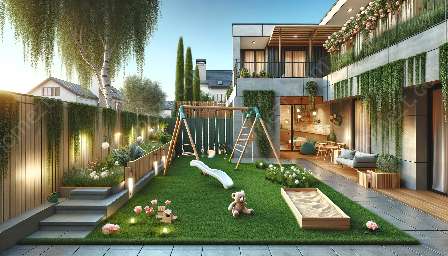Gardening is more than just planting and nurturing plants - it's a way to create lively and engaging spaces for outdoor play areas and nurseries. In this comprehensive guide, we'll explore the wonders of gardening and how it can be integrated into these environments in an attractive and real way.
Gardening and Outdoor Play Areas
Outdoor play areas provide children with the opportunity to explore and engage with nature. By incorporating gardening into these spaces, we can create an environment that encourages them to appreciate the natural world and learn about the importance of caring for plants. Here are some ways to make gardening a part of outdoor play areas:
- Sensory Gardens: Create a sensory-rich experience by planting a variety of plants with different textures, scents, and colors. Children can touch, smell, and observe the plants, enhancing their sensory development.
- Interactive Learning: Introduce educational elements by labeling plants, creating simple planting beds, and providing basic gardening tools. This allows children to learn about the plant life cycle and the fundamentals of gardening in a hands-on manner.
- Wildlife Habitats: Incorporate plants that attract butterflies, bees, and birds to the play area. This not only adds a natural touch but also teaches children about the importance of pollinators in a garden ecosystem.
- Themed Gardens: Design themed gardens such as a rainbow garden with plants of different colors, a fairy garden with whimsical and magical elements, or a vegetable patch for children to grow and harvest their own produce.
Gardening in Nurseries and Playrooms
Nurseries and playrooms serve as indoor environments for young children to explore and play. Integrating gardening into these spaces can introduce them to the world of plants and nature in a safe and controlled setting. Here's how gardening can be incorporated into nurseries and playrooms:
- Indoor Potted Plants: Introduce potted plants to the nursery or playroom to bring a touch of nature indoors. Opt for plants that are safe for children and easy to maintain, such as spider plants, pothos, or peace lilies.
- Sensory Play with Soil: Create sensory bins filled with child-friendly soil for them to explore, dig, and interact with. This allows children to experience the tactile sensations of gardening without the need for an outdoor space.
- Garden-themed Art and Decor: Use garden-themed artwork, wall decals, and decor to bring the beauty of nature into the nursery or playroom. This can include colorful murals, nature-inspired wall hangings, and playful garden-themed furniture.
- Planting Activities: Organize simple planting activities where children can sow seeds, observe germination, and care for small plants indoors. This hands-on experience can teach them about responsibility and the nurturing of living things.
Cultivating a Love for Nature
By integrating gardening into outdoor play areas, nurseries, and playrooms, we can cultivate a love for nature in young children. Gardening encourages them to engage with the natural world, learn about plants and their life cycles, and develop a sense of responsibility and care. Whether it's creating a vibrant outdoor play area with a touch of nature or introducing gardening into indoor play spaces, the art of gardening has the power to inspire and educate children about the wonders of the natural world.


